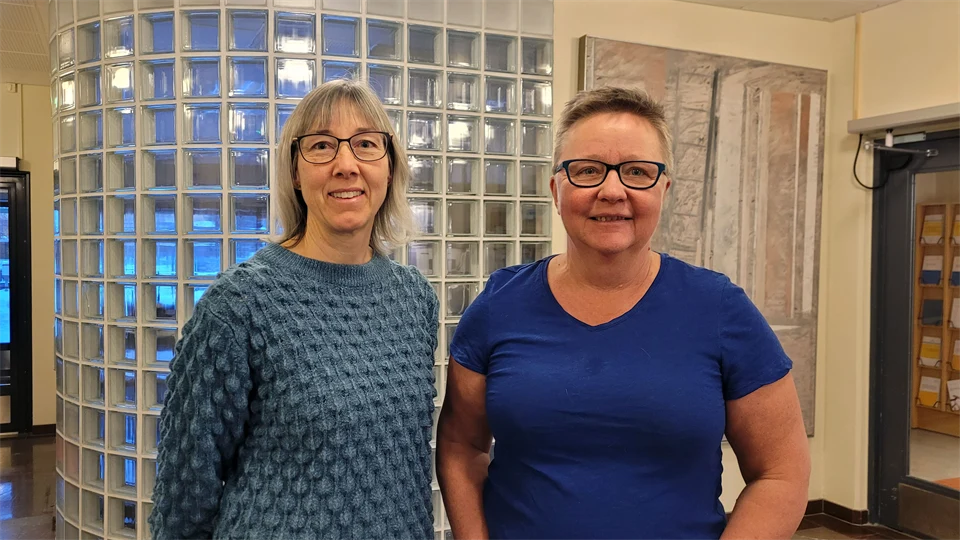Better and more fun in interactive halls
Fewer dropouts, happier students, better learning and a more pleasant classroom situation – how do you fix it? Susanne and Lotta, both teachers of building technology, have the answer. They have developed a new approach to teaching in hybrid form. And the students' response is very positive.
As a distance student, it is easy to feel alone in your study situation and lack classmates to interact with. In addition to making it more difficult to study, it can also take the edge off the desire to study and lead to dropouts. It was this problem that made Susanne Lindström and Lotta Wickenberg start thinking about how they could set up hybrid teaching in the active learning classrooms (ALC) so that it both promoted a sense of coherence and learning for their distance students.
" We started by sending out a survey and asking if there was an interest, and it became clear that those who studied at a distance felt left out and would like to find classmates to help each other in their studies. says Susanne Lindström.
Positive effect on learning
Once they had received support from the students for their idea, they developed it further. A hybrid course in construction construction served as a pilot study. By dividing the class into groups consisting of both campus and distance students at the presentations, the students immediately had a better contact on a social level, which turned out to have an effect on learning as well.
" We changed the set-up by having presentations in the form of seminars with cross-groups. Everyone then had to learn the whole project as no one from the same project group reported together. It was an incredibly big learning moment when they showed each other and shared screens. In addition, they had a lot of fun," says Lotta Wickenberg.
Good to be two
However, designing the presentations in this way, where campus and distance students work in common interdisciplinary groups, requires both functioning technology and preparation. In addition, being two teachers who helped each other was no disadvantage, they say.
" One of us was able to hold the introduction, while the other divided the class into groups and breakout rooms and took care of the technical aspects. We had some problems with the lack of ceiling pickups and cameras on the computers that the campus students sat at, but they solved it themselves by connecting their own computers. Now we have also received a promise from Infra that microphones and cameras will be installed in the ALC halls.
Satisfied students
Their new model with cross-group presentations has received a very positive response from the students. In the evaluation, they have expressed that it has been more instructive and easy-going, that they realized that they have nice classmates and that the solutions to the tasks became more varied and exciting.
" And for us, it has only meant marginally more work," say Lotta Wickenberg and Susanne Lindström.
Their model has been developed within the framework of HEaD (Higher Education and Digitalisation), which is about increasing Mid Sweden University's ability to work with technology-supported and lifelong learning.
Inspired? Read more about the pilot study!
Lotta's and Susanne's tips and tricks for interactive presentations:
- Make it a compulsory element so that both distance and campus students participate.
- If possible, try to be two teachers in the room, then one can take care of the technical aspects in the beginning and one can instruct the students. Even when you have to walk around the hall and listen to all the groups, it's good to be two.
- Book a walk-through of the interactive room together with educational developers and INFRA
- Use clear instructions before the presentation so that the students are well prepared.
- Ask the campus students to arrive 10 minutes before the start of the seminar in order to have time to start up the technology in the room.
- Students must know their student login.
- If there are no cameras for each table in the accounting room, ask the campus students to bring their own computer/tablet where they can connect to Zoom without sound.
